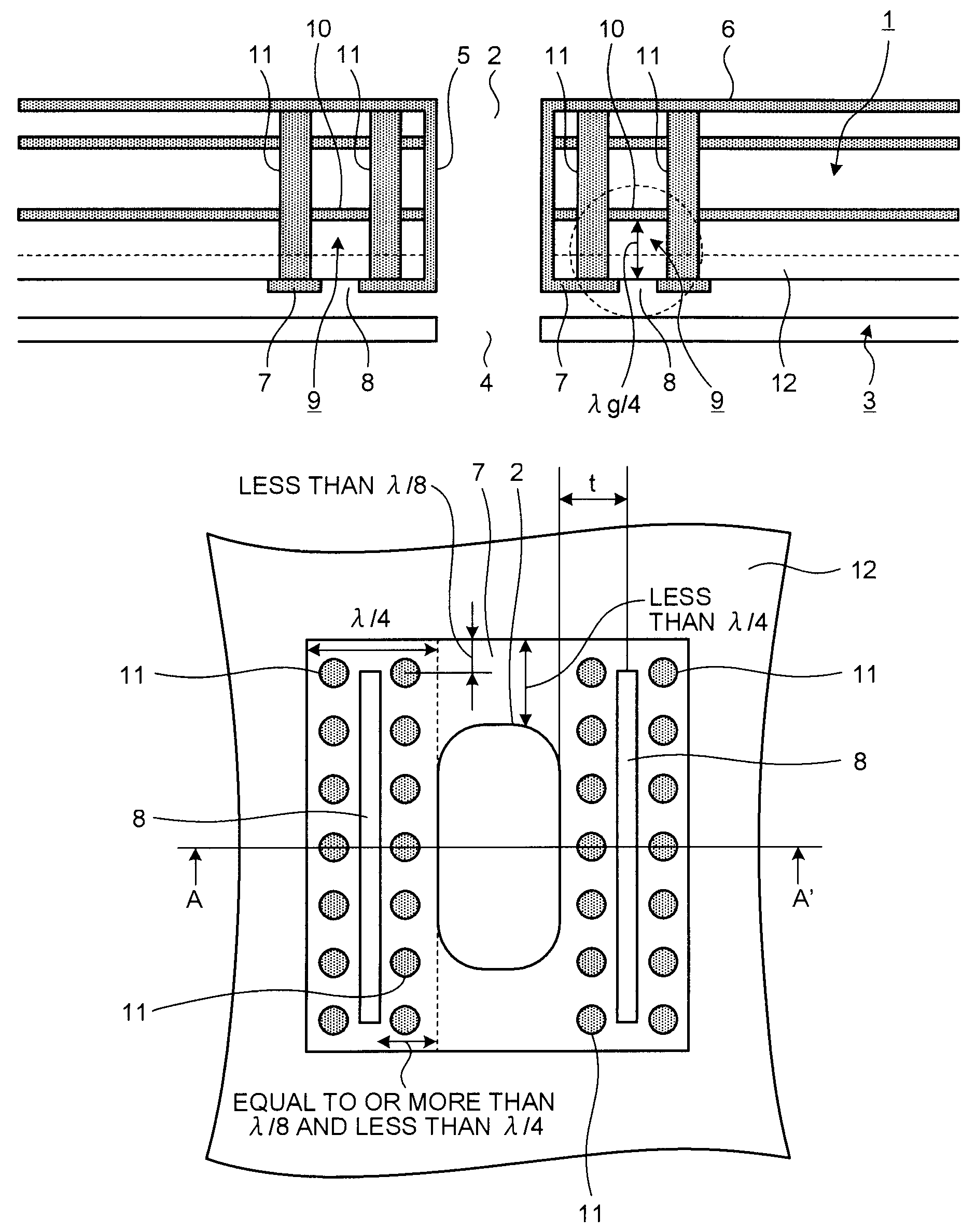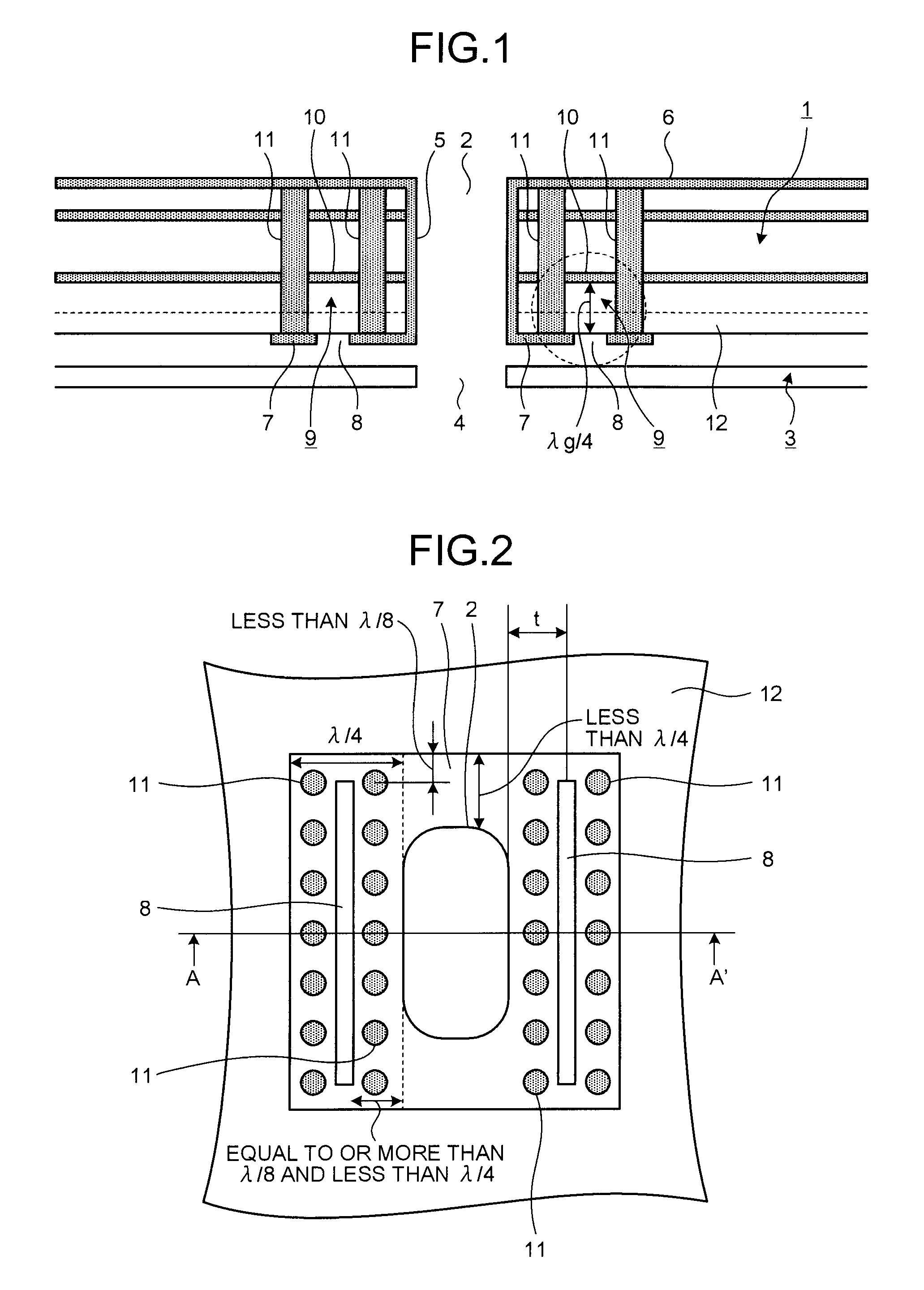Waveguide connection between a multilayer waveguide substrate and a metal waveguide substrate including a choke structure in the multilayer waveguide
a multi-layer waveguide and waveguide substrate technology, applied in waveguides, waveguide type devices, basic electric elements, etc., can solve the problem of large transmission loss of electromagnetic waves at the connection area, achieve the connection characteristics of waveguides, reduce leakage, and reduce signal loss
- Summary
- Abstract
- Description
- Claims
- Application Information
AI Technical Summary
Benefits of technology
Problems solved by technology
Method used
Image
Examples
Embodiment Construction
[0031]Exemplary embodiments of the present invention are explained in detail below with reference to the accompanying drawings, wherein like features in the different figures are denoted by the same reference number and may not be described in details in all drawing figures in which they appear. The present invention is not limited to the embodiments.
[0032]The embodiment of the present invention will be described below with reference to FIGS. 1 and 2. FIG. 1 is a cross section of a waveguide connection structure according to the embodiment. FIG. 2 is a plan view of a conductor pattern portion (land portion). The cross section shown in FIG. 1 corresponds to a cross section taken along a line A-A′ in FIG. 2. The waveguide connection structure according to the embodiment is applied to, for example, a millimeter-wave or microwave radar, such as an FM / CW radar.
[0033]A hollow waveguide 2 having a substantially rectangular shape at cross section is formed in a multilayer dielectric substra...
PUM
 Login to View More
Login to View More Abstract
Description
Claims
Application Information
 Login to View More
Login to View More - R&D
- Intellectual Property
- Life Sciences
- Materials
- Tech Scout
- Unparalleled Data Quality
- Higher Quality Content
- 60% Fewer Hallucinations
Browse by: Latest US Patents, China's latest patents, Technical Efficacy Thesaurus, Application Domain, Technology Topic, Popular Technical Reports.
© 2025 PatSnap. All rights reserved.Legal|Privacy policy|Modern Slavery Act Transparency Statement|Sitemap|About US| Contact US: help@patsnap.com



